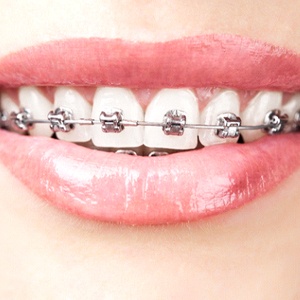What Sets Cumming Braces and Aligners Besides Various Other Orthodontic Treatments
What Sets Cumming Braces and Aligners Besides Various Other Orthodontic Treatments
Blog Article
Comprehensive Guide to Orthodontics Treatments for Dealing With Oral Imbalances
Comprehending the details of each procedure, including their mechanisms, benefits, and potential downsides, is critical in making educated choices concerning one's orthodontic therapy. As we navigate via the comprehensive guide to orthodontic treatments for correcting oral imbalances, the detailed information of each method will certainly unfold, losing light on the path toward a functional and harmonious dental positioning.
Orthodontic Procedures Introduction

Along with clear aligners and typical braces, orthodontists may additionally recommend various other interventions like headwear, palatal expanders, or retainers to deal with specific alignment problems (cumming orthodontist). These procedures are tailored to each patient's special demands and may involve a mix of treatments to accomplish the preferred results. Regular modifications and tracking are crucial parts of orthodontic treatment to guarantee progress is on track and to make any required adjustments along the road. By undertaking orthodontic procedures, people can not just attain a straighter smile but additionally enhance their general oral health and wellness and feature.
Standard Dental Braces: How They Function
When taking into consideration orthodontic treatments for oral imbalances, conventional dental braces stand out as a time-tested method for fixing teeth placing. Traditional dental braces consist of brackets, cables, and bands that function with each other to apply constant stress on the teeth, progressively moving them into the preferred placement.
One key element of exactly how traditional dental braces job is the procedure of bone renovation. As stress is used to the teeth via the braces, the bone bordering the teeth is improved to support the new tooth positions. This renovation is crucial for the long-lasting stability of the dealt with alignment. People will need regular modifications at the orthodontist's workplace to ensure the dental braces proceed to use the appropriate pressure for reliable teeth activity.
Undetectable Aligners: Disadvantages and pros
Undetectable aligners provide a very discreet and practical option to traditional braces for remedying oral imbalances. These clear, tailor-made trays are basically invisible when worn, making them an attractive option for people seeking a more cosmetically pleasing orthodontic treatment. One of the main benefits of unnoticeable aligners is their removability, enabling less complicated maintenance of oral health compared to traditional dental braces. People can get rid of the aligners before eating or cleaning their teeth, lowering the risk of food obtaining stuck in the home appliance and streamlining the cleansing procedure.

Surgical Orthodontic Options
Surgical interventions in orthodontics present sensible options for dealing with intricate oral imbalances that may not be properly fixed through traditional orthodontic therapies. While traditional dental braces and unnoticeable aligners can fix lots of orthodontic problems, certain instances require medical treatment to attain optimum outcomes. Surgical orthodontic alternatives are commonly recommended for extreme malocclusions, substantial jaw disparities, and situations where the underlying bone framework needs alteration to attain proper positioning.
One typical medical orthodontic treatment is orthognathic surgical procedure, which includes rearranging the jaws to remedy visit our website practical issues such as problem eating or talking. This surgery is frequently executed in collaboration with an orthodontist that helps straighten the teeth before and after the treatment. Surgical orthodontics may additionally include procedures to subject affected teeth, get rid of excess periodontal tissue, or reshape the jawbone to produce an extra unified face account.
Prior to taking into consideration surgical orthodontic options, patients undergo a comprehensive examination to identify the requirement and prospective benefits of such treatments. invisalign. While surgery might appear challenging, it can dramatically improve see here both the function and looks of the smile in situations where traditional orthodontic treatments drop short
Retainers and Post-Treatment Care

Failing to abide with post-treatment care directions can result in regression, where the teeth progressively relocate back in the direction of their original placements. Regular retainer wear, good oral hygiene, and regular oral check-ups are necessary for keeping the results accomplished through orthodontic surgical treatment and making certain the lasting stability of the dealt with oral positioning.
Final Thought
In conclusion, orthodontic procedures use various choices for remedying oral imbalances. Traditional braces utilize steel brackets and cables to change teeth into appropriate alignment. Unseen aligners supply a more discreet option however might not appropriate for all instances. Surgical orthodontic choices are offered for much more serious misalignments. Retainers are generally utilized post-treatment to maintain the new alignment. In general, orthodontic procedures can effectively improve oral health and visual appearance.
As we browse with the comprehensive guide to orthodontic procedures for correcting oral misalignments, the detailed details of each technique will certainly unravel, losing light on the course towards a harmonious and useful oral positioning. - braces
One of the most common orthodontic therapies is the usage of braces, which are composed of metal braces and cords that use mild stress to slowly shift teeth into the wanted placement.When taking into consideration orthodontic therapies for oral misalignments, standard dental braces stand out as a tried and true approach for fixing teeth positioning. Furthermore, unnoticeable aligners might not be appropriate for intricate orthodontic concerns that need more considerable teeth movement, as they are normally suggested for moderate to moderate instances. Retainers are personalized orthodontic devices developed to hold teeth in their dealt with settings after the completion of orthodontic treatment.
Report this page